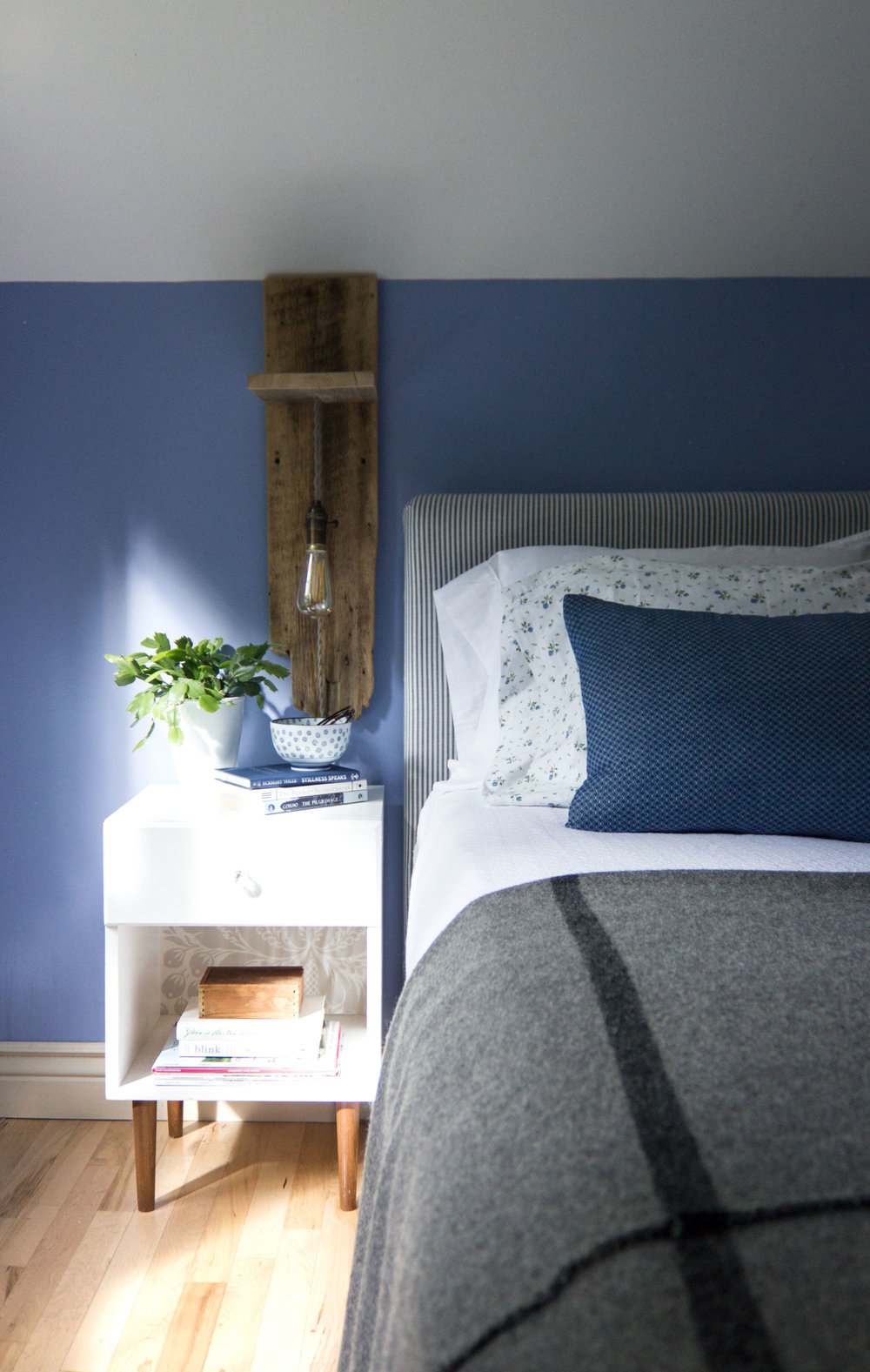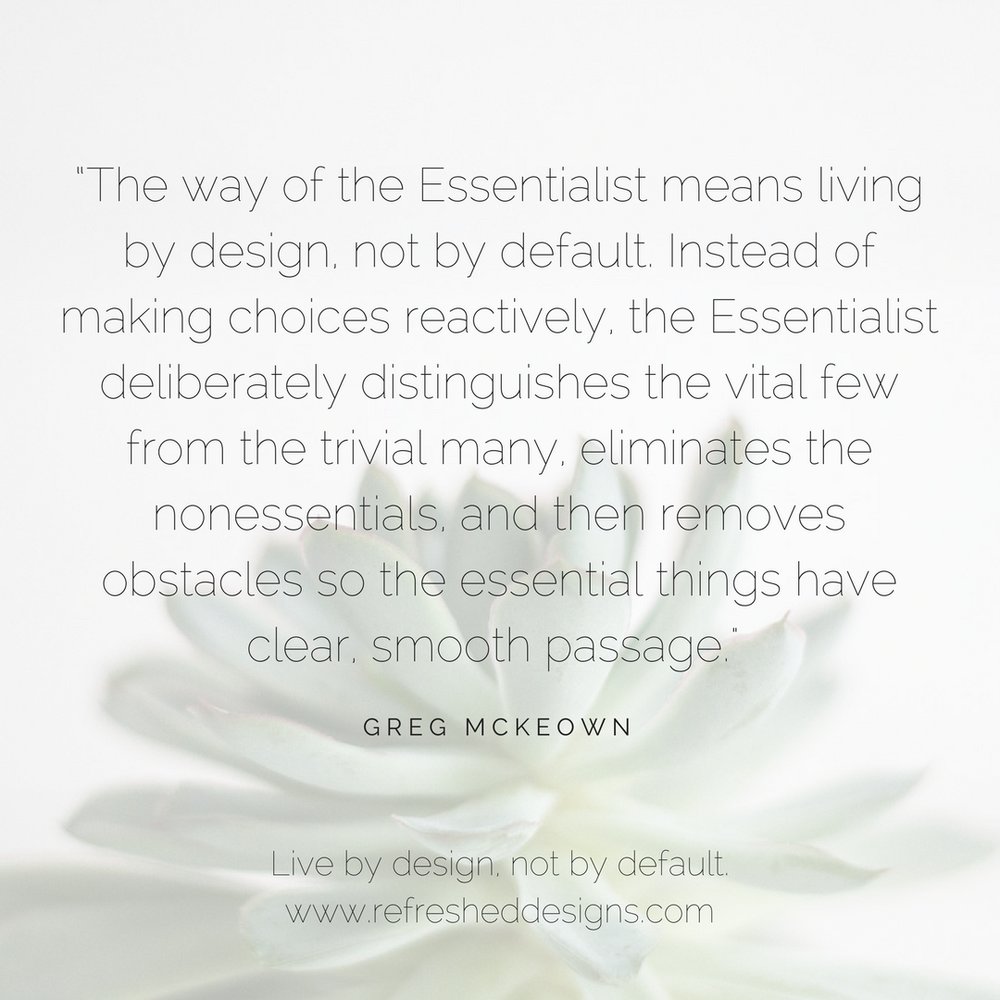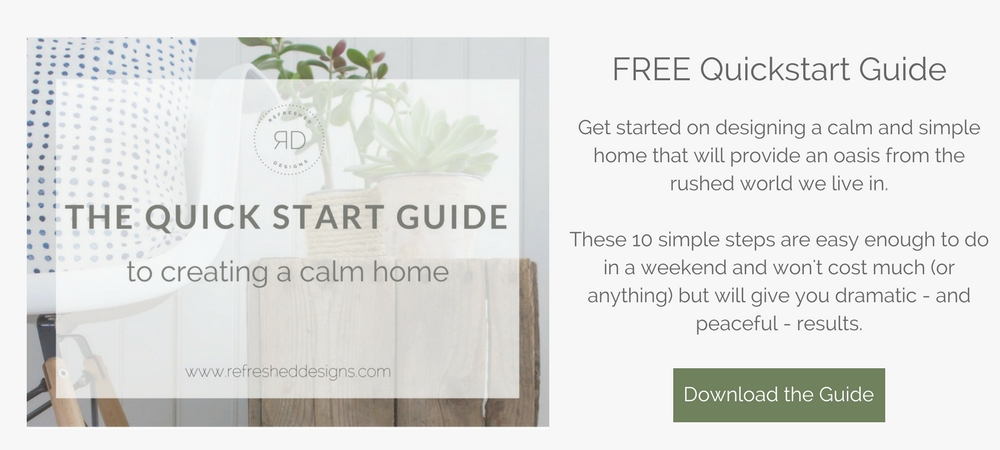My philosophy and style for home and life is Essentialism. It comes from the eye-opening book, , by Greg McKeown that helped change the way I do things at work and in my calendar, and that I also adopted for home as well.
I’ve always been a simplifier, but I’m not a minimalist – I like the comforts of collections, tactile rugs and pillows, books, and flowers and plants too much to join the minimalist camp. I admire the principles of minimalism – to own less in order to gain the freedom to do more of the important things in life – but I think sometimes it can become an obsession in and of itself.
I even call my style at home Essentialism. It’s what I teach in my courses and my coaching work with clients, and for some it can mean minimalizing (if you’re just beginning a decluttering journey), but for others it really means surrounding themselves with the things that will help them live abuntantly.
Essentialism is really the art of discerning between external noise and internal voice. It means understanding your values, your dreams, your goals, and then making sure that the essentials of your life – the time you spend, the people and things you surround yourself with – are essential to realizing those dreams and goals. If they’re not, you give them up.
At home, this means that surrounding yourself only with those things that support you and make you feel and be your best.
For me, that’s committing to a healthy lifestyle, expressing creativity, and spreading peaceful happiness to others as my way of contributing to the world. To be successful in these things, it’s helpful to be in a home that encourages mindfulness, serenity, cooking, meditating, reading, writing, and entertaining clients and friends. And so all of the stuff that I’ve accumulated over the years that doesn’t lend to these things has gone to the donation centre. I keep things comfortably edited to only the artwork that makes me smile, the lamps and comfy chairs that beckon me to curl up and read at night, the kitchen tools that make it easier for me to cook a healthy supper instead of eating out. I arrange my office for the best possible flow of work – both a sitting and standing desk and room to spread out my colour chips and fabric samples. I set up my entryway so that everything is easy for me to get out the door and start the day on a positive note. These are the essential things that keep me focused on being my best self. Making them work beautifully in my home is the secondary task – still an important one in making me feel great, but secondary after function and essentials.
How do you create an Essentialist home?
Design it with your dream/goal lifestyle in mind. You need to figure out the things you need help with – perhaps it’s exercising regularly, socializing & entertaining more, or leaving work behind and unwinding at night. Then set your home up so that you can more easily do these things. Perhaps get rid of the spare bed in an undersued bedroom and turn it into an exercise room. Maybe it’s rearranging your living room to encourage conversation, not TV watching. Or finding a corner to set up a meditation/quiet area just for you.
Design your home for function, then layer in comforts and beauty, but be careful not to add so much that it distracts you from your essential purpose and goals. As McKeown says “Our whole society has become consumed by the undisciplined pursuit of more. The only way to overcome this problem is to change the way we think—adopt the mindset of only doing the things that are essential—and do it now.”
A few practical ideas to get you started:
1. Get rid of any clutter laying around where it doesn’t belong. Everything should have a home where you know where to find it. If it doesn’t have a home, maybe you don’t really need it.
2. Is there space in your home? On your walls? Don’t fill up every single space. Allow room for flow. It will ease your mind and allow more space in there too!
3. Organize your rooms for how you use them. Put all the baking supplies together. Create a convenient smoothie station. Designate specific spots at your entry for keys, shoes, and coats. Turn the unused bedroom into a writing room or yoga room or photography space. Hang a valet hook in the bedroom to hang out your workout wear so you it’s easy and you can’t ignore it.
4. Calm your bedroom. This needs to be a relaxing oasis that encourages rest and rejuvenation. It’s an essential for everyone. Clear off your nightstand so it contains only books, a good light, and a bowl or tray to corral your essentials like glasses and lipbalm (not your phone!).
5. Edit, edit and edit some more. I’m always taking things away from displays on shelving or tables and from groupings on the walls. Stand back and look at your vignettes with an essentialist perspective and edit things down a little so only the most important and most meaningful to you shine through.
I’d love to hear your thoughts on creating an essentialist home. What does (or would) yours look like?
If you’re interested in beginning the journey toward an Essentialist home and lifestyle, sign up below for the Quickstart Guide, or contact me for .
Pin this post for later, and to share with others!




































